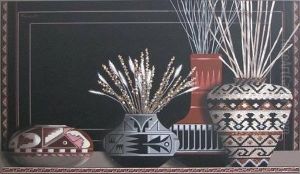Francisco Manuel Blanco Paintings
Francisco Manuel Blanco was a Spanish friar and botanist who is best known for his extensive work in the field of botany in the Philippines during the Spanish colonial period. Born in 1778 in Navianos de Valverde, Spain, Blanco joined the Order of Augustinian Recollects and was later sent to the Philippines as a missionary.
Upon his arrival in the Philippines, Blanco devoted himself to the study of the local flora. His interest in botany was not just academic; it was also driven by his missionary work, as he believed understanding the local plants would help in ministering to the needs of the Filipino people, both spiritually and medicinally.
Throughout his time in the Philippines, Blanco traveled extensively, collecting specimens and documenting the diverse plant life of the archipelago. His most notable contribution to botany is his book 'Flora de Filipinas', first published in 1837. This comprehensive work included descriptions of many Philippine plants, and it was the first of its kind for the Philippines. The 'Flora de Filipinas' went through several editions, including an updated version which was published posthumously and featured illustrations by the renowned Filipino painter and botanist, Father Manuel Blanco.
Blanco's work had a significant impact on the scientific community and provided valuable insights into the botanical resources of the Philippines. The 'Flora de Filipinas' remained the primary reference for Philippine botany for many years and has had lasting influence. Blanco's dedication to the study of Philippine plants not only advanced the knowledge of the region's flora but also contributed to the broader field of tropical botany.
Francisco Manuel Blanco passed away in 1845, but his legacy lives on through his contributions to the field of botany. His work is a testament to the intersection of science and religion during the Spanish colonial period, illustrating how religious figures often played crucial roles in scientific discovery and documentation during that era.
